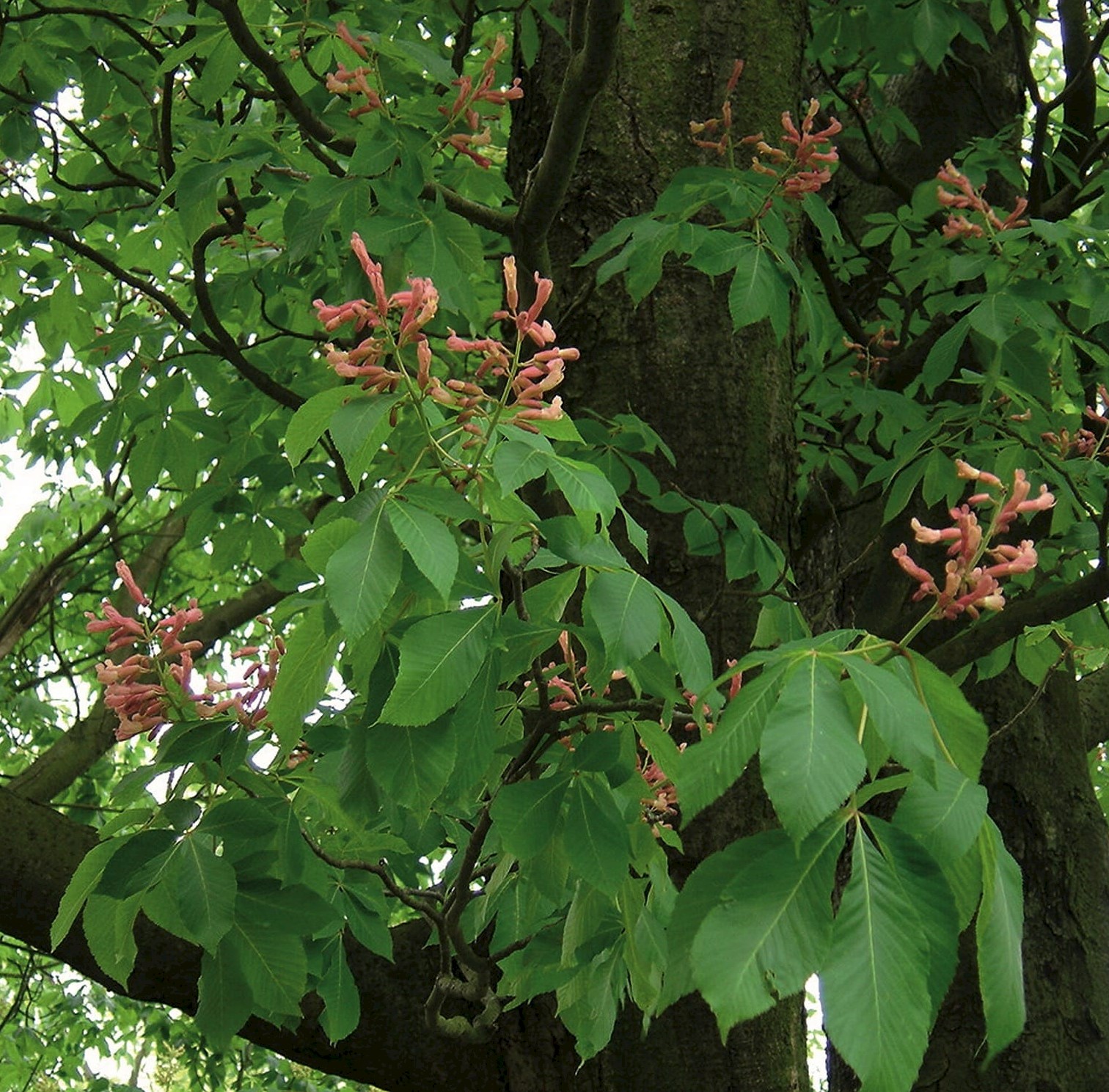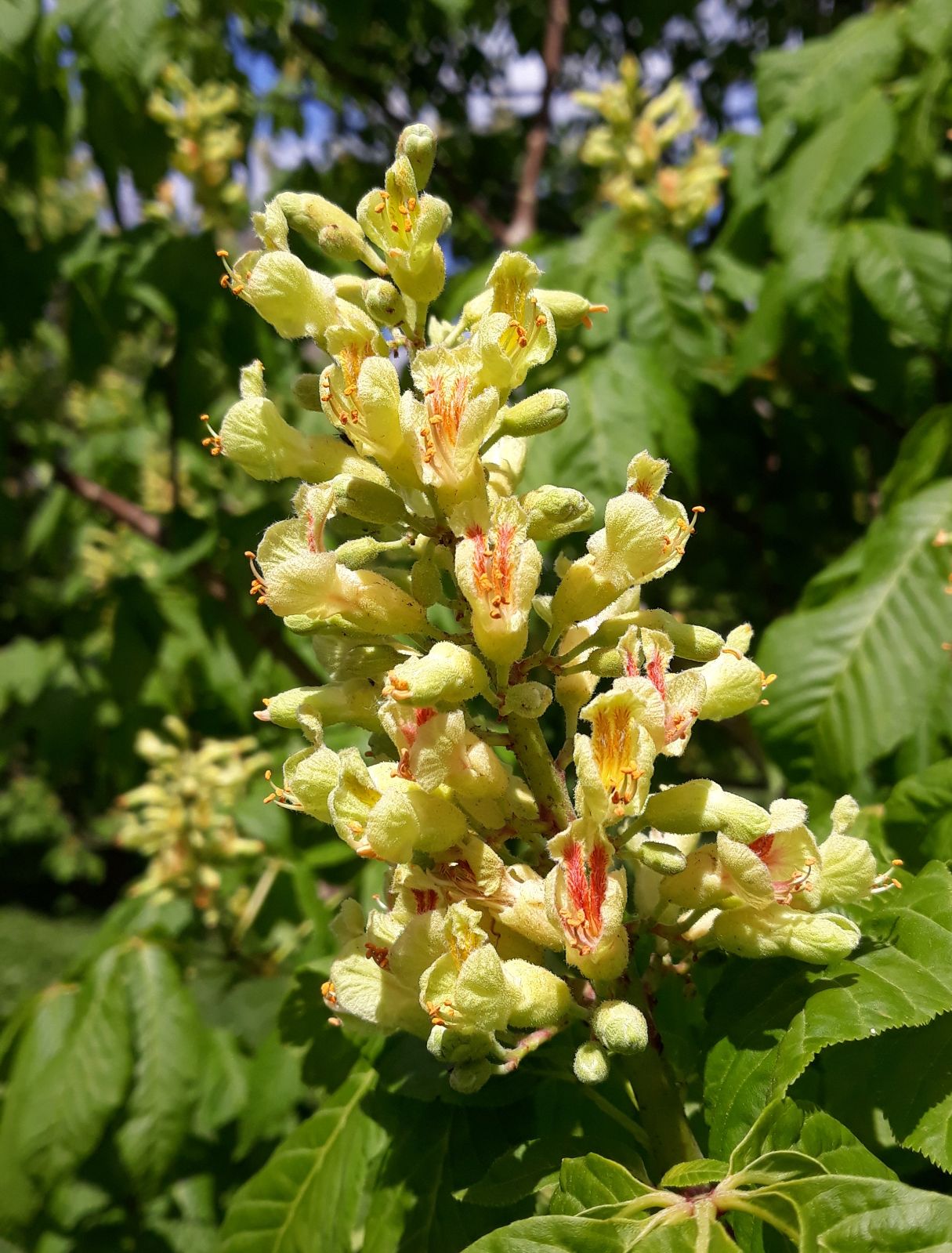Aesculus × bushii
Credits
Article from New Trees by John Grimshaw & Ross Bayton
Recommended citation
'Aesculus × bushii' from the website Trees and Shrubs Online (treesandshrubsonline.
Genus
Other taxa in genus
- Aesculus californica
- Aesculus × carnea
- Aesculus chinensis
- Aesculus + dallimorei
- Aesculus flava
- Aesculus glabra
- Aesculus glabrescens
- Aesculus glaucescens
- Aesculus hippocastanum
- Aesculus indica
- Aesculus × marylandica
- Aesculus × mutabilis
- Aesculus × neglecta
- Aesculus octandra
- Aesculus parviflora
- Aesculus pavia
- Aesculus splendens
- Aesculus sylvatica
- Aesculus turbinata
This taxon, together with A. ×mississippiensis Sarg., is a naturally occurring hybrid with A. glabra and A. pavia as the parent species. Such hybrids typically have yellow, pink or red flowers (different coloured flowers can occur within the same inflorescence) with exserted stamens, petals of unequal size with glandular margins, and capsules with an irregularly spiny surface. They form small, low-spreading trees to 8–10 m tall. The morphology is rather variable and depends on the exact parentage of the hybrid. F1 hybrids are intermediate, but backcrossing of hybrids with either of the parental species results in a variety of forms that are more similar to that parent. Hardin 1957b, Wright 1985. Distribution USA: Alabama, Arkansas, Louisiana, Mississippi, Missouri, Oklahoma, Texas. Habitat As for the parent species. USDA Hardiness Zone 7. Conservation status Not evaluated. Illustration NT118. Cross-reference K118. Taxonomic note The differences between A. ×bushii and A. ×mississippiensis are uncertain and the names may be synonymous.
Aesculus × bushii is quite widely cultivated and freely available in commerce. It forms a small tree (9 m at Kew, 9.7 m at the Hillier Gardens, TROBI) and is noted for its multi-coloured inflorescences: the flowers start yellow and fade through pink to red.
† A. × mississippiensis Sarg. – A hybrid between A. glabra and A. pavia, which could be confused with A. × hybrida. The most reliable difference would appear to be in the fruits. These are warted, a character no doubt deriving from the prickly fruits of A. glabra and the smooth ones of A. pavia; in A. × hybrida they are smooth, as in both its parents. Another difference is said to be that the stamens are usually longer than the petals (shorter in A. × hybrida). A possible earlier name for this cross is A. × bushii Schneid.


